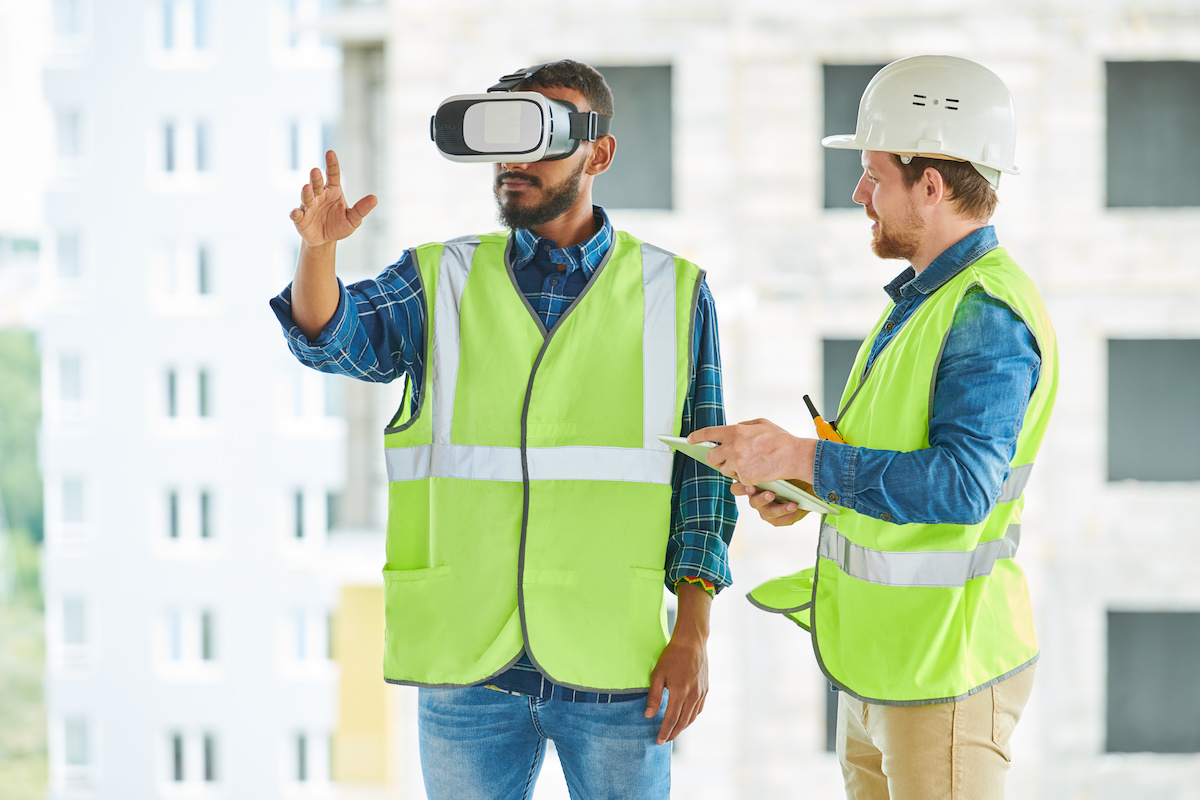Could artificial intelligence and augmented reality (AR) hold the key to eliminating costly rework and reducing the carbon footprint of data centre construction? Waleed Zafar, Director of Mission Critical at XYZ Reality, believes so, as he explains.
The rapid growth of the digital economy has sparked an unprecedented demand for data centres. These facilities, essential to supporting the world’s data-driven needs, require intensive resources to build and operate.
With major investments in data centres coming from giant corporations and private equity firms, some estimates suggest the market will grow up to 20% annually through 2027.
However, their environmental impact is being scrutinised more closely. Forward-thinking contractors and developers are tackling this challenge head-on, leveraging technologies like AI and AR to make better decisions, minimise waste, increase efficiency and reduce the environmental footprint of data centre construction.
The hidden sustainability cost of ‘rework’
One of the most significant and often overlooked drivers of environmental impact in construction is rework.
Design or execution errors can lead to the demolition and replacement of completed work, wasting valuable materials, energy, and time. For data centres, where precision and complexity are paramount, the consequences of rework are significantly magnified. Studies estimate that rework can account for up to 20% of total project costs, and 98% of megaprojects either become delayed or are completed over budget.
Beyond the financial implications, this inefficiency translates into increased carbon emission, water usage, and material waste. For example, producing concrete, the most commonly used material in construction, is one of the largest industrial contributors to CO2 emissions globally. Every cubic meter wasted due to rework adds to this environmental toll.
Rework is one of the biggest contributors of waste in construction, and in data centres, the stakes are even higher. When errors happen, they’re not just expensive; they can delay timelines and generate a significant carbon footprint due to wasted materials, energy, and transportation. Not to mention the subsequent labour and resource demand.
Tackling rework is one of the most effective ways to improve sustainability in data centre construction.
Eco-friendly data centre construction methodologies
Reducing the environmental footprint of data centre builds requires a multifaceted approach. Many contractors and developers are incorporating sustainable construction practices to limit waste and optimise resource use. These include:
- Prefabrication and modular construction: By manufacturing components off-site in controlled environments, builders can improve precision and reduce material waste. Additionally, it minimises transportation emissions, on-site disruptions, and labour.
- Circular economy principles: Incorporating recycled materials and reusing components wherever possible reduces reliance on virgin resources.
- Energy-efficient equipment: Transitioning to electric or hybrid machinery helps lower greenhouse gas emissions associated with construction processes.
While these methods contribute significantly to sustainability, technology provides the industry with tangible solutions. AI and AR, specifically, are transforming the way data centres are built, allowing teams to anticipate problems, streamline processes, improve efficiency and minimise environmental impact.
A vision for sustainability through AI and AR
Integrating AI and AR represents a paradigm shift and we’re at a turning point. The technologies we adopt today aren’t just tools to improve efficiency. They’re enabling us to fundamentally rethink how we approach these projects, ensuring that we build with greater intention.
Artificial intelligence for predictive accuracy
AI algorithms can process vast amounts of data to identify potential errors or inefficiencies in planning, design, and execution. By identifying these issues early, teams can prevent costly rework and minimise waste. Additionally, AI helps optimise resource allocation, ensuring that materials are used effectively and sparingly.
When you’re managing a build at this scale, it’s like conducting an orchestra where every detail matters. AI helps anticipate where issues might arise, solving problems before they even happen. That level of foresight and predictability is transformative.
On-site efficiency through augmented reality
AR built with construction in mind can provide real-time, on-site visualisation of construction plans, allowing teams to align their work with millimeter-level accuracy. By enabling workers to see exactly how designs should translate into the physical build, AR significantly reduces errors. It also facilitates instant comparisons between the design and actual build, catching deviations before they escalate.
Augmented reality gives teams on the ground the tools to see the build as it’s meant to be. Mistakes that might have gone unnoticed for weeks or months are caught immediately, meaning things are built right the first time.
Enhanced collaboration
AI and AR foster better collaboration among project stakeholders. With leadership on board with utilising this technology, these tools can create a shared digital environment where architects, contractors, and clients can access real-time data, discuss updates, and make informed decisions quickly. This seamless communication reduces delays and ensures that sustainability goals are consistently met.
When everyone is working from the same accurate, real-time data, it creates a unified vision for the project. That cohesion is critical for avoiding missteps and staying aligned with sustainability goals.
Building a sustainable future
The growing demand for data centres shows no signs of slowing, and with it comes a responsibility to build in a way that prioritises the planet. By embracing AI, AR, and other sustainable construction practices, contractors and firms are proving that efficiency and eco-consciousness can go hand-in-hand.
These technologies represent more than tools. They embody a commitment to a better way of building. The race to build data centres isn’t slowing down, and the environmental stakes are only getting higher.
By reducing the need for rework, optimising resource use, and enabling precise execution, AI and AR are paving the way for a more sustainable future for data centre construction. As the industry continues to evolve, these technologies will remain critical in striking the balance between progress and preservation.


